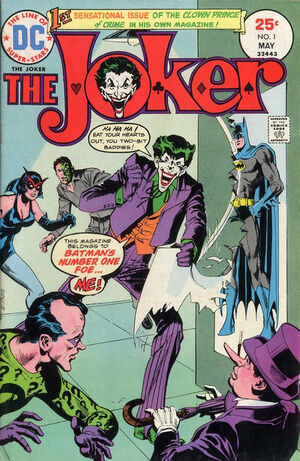When I look at the stats in my Collectorz.com software, I feel like I'm watching a race. A race between publishers and titles, mostly. Right now Archie is in the lead, but that can't and won't last because I entered almost all of my Archie comics first and I just don't buy that many of them any more. And even though I have not purchased a single DC or Marvel title for at least two years, I bought those two publishers almost exclusively for about 25 years.
Simply put, Marvel or DC will pass Archie before the end of May. As of this moment, here's how things break down for my top five publishers:
- 877 - Archie
- 869 - Marvel
- 729 - DC Comics
- 95 - Kenzer & Company
- 52 - First Comics
In all, I'm starting with 2,969 comics tonight. As you can see, Marvel could pass Archie in a matter of minutes if I just opened the right box. But that's not where I'm going tonight. Tonight, I've decided to finish sorting through
Bat Box 2 so I can put it away -- and move back to
Bat Box 1. BB1 contains mostly older Batman and Detective titles, whereas BB2 contains a mixed bunch of titles mostly from around 1998-1999 (a lot feature in the famous
No Man's Land saga), but also has some earlier material. But all of it is related to Batman.
Here's a glance at what I'm planning to enter in the next hour.
 |
| Mostly Batman Comics that need to be cataloged. |
In addition to racing to see which publisher has the most comics, I've also decided to race to see how fast I can enter these comics into the system, and blog about it while I'm doing it. My plan is to stop at regular intervals to see how fast I'm going. I'll also mention any problems I have with missing issues or titles that I encounter along the way. Since Batman is very popular, so I'm not expecting any big problems.
Gentlemen, start your engines!
I spent about 20 minutes sorting them by title and in issue order. This should make it a lot faster to enter them. Also, I replaced a few bags that felt funny (I think I mentioned in the past that I have a few old bags that feel oily to the touch, so I'm tossing those out and replacing them). My goal is not to bag or board any comics, but just to catalog them.
3 p.m. Start Time: I'm going to start with titles of which I have short runs. Here's what I got done during this time:
- 7 - Batman: Shadow of the Bat
- 15 - Batman: Legends of the Dark Knight
- 17 - Nightwing
- 9 - Robin, vol. 2
3:06 - 3:15 p.m. Finished those above, but am now spending more time than expected trying to find Robin II mini-series, only to find I'd already entered it. Same thing with another All-Star Batman and Robin #1. I did find that I needed to enter the second book of Robin 3000, along with 80-Page Giant Robin. All in all, 5 new comics entered.
3:17 p.m. - 3:28 p.m.: Things are slowing down as I'm having to hunt through a lot of miscellaneous Batman titles to find graphic novels and one shots.
- 3 - Anarky ( I know I'm missing some of these -- I'm pretty sure I've got all of them)
- 11 - Azrael: Agent of the Bat
- 4 - Batman: The Cult
- 10 - Misc. One-Shot Bat Titles
3:30 - 3:36 p.m.: More Bat one-shots like the Killing Joke, Other Realms, The Book of Shadows, Batman Chronicles, Gotham Knights, Dark Knight Returns TPB, etc. At this point, I called it quits and ran a tally on how many comics I had entered in about 30 minutes (I'll knock off about 6 minutes for blogging).
I entered 93 Batman comics today,
bringing my new total to 3,062.
 |
Thumbnails of what I entered tonight.
Click for full-sized image. |
I actually looked for more than 100, but some of them had already been entered while working on another box. I had transferred them to Batman Box 2 as part of my efforts to sort things out. Also, I used this opportunity to use the "Edit Many Comics" feature to select all the comics I entered today and set their location to "Batman 2." Combined with about 35 other Bat books (Birds of Prey, Catwoman,
Batgirl, etc.), this box is about 95% full -- leaving me just a little room to tip in other titles of these series that turn up.
By the way, my top three publishers are in serious contention for first place:
- 877 - Archie
- 869 - Marvel
- 820 - DC Comics
Not bad for an evening's work, and I can finally get a box out of my office and put it up. Slowly, but surely I'm making progress on getting these cataloged and on cleaning out my office.
See ya back here for Netflix Friday!



















